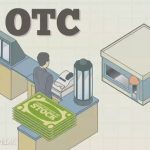National Employee Benefits Day: Satisfaction on the Workplace
Today, April 2nd, is National Employee Benefits Day, recognized by the International Foundation of Employee Benefits. GuideSpark, the leader in employee communications and engagement, chose this day to share its expertise on how companies can increase employee benefits programs adoption to improve wellness and result in a healthy, satisfied and engaged workforce, and offering some complimentary resources on the subject: Wellness Strategy Webinar, Wellness Strategy Playbook, Wellness Participation Infographic and some thoughts on Financial Wellness.
According to Locke, a renowned author on this subject, “work satisfaction” is understood as the perceived relationship between what an individual expects from his work and what he perceives to be obtaining. It is also a state of emotional pleasure, resulting from the assessment that the employee makes, regarding the extent to which his functions meet his professional goals.
Several theories relate salary to happiness but, today, the overall benefits and compensation are no longer the unique and decisive in factors when employees choose a new job. Of course that people tend to seek some level of financial growth, but this is no longer the most important factor on this topic. This is when employee wellness program plays an important part.
A study by Towers Waston heard from 90,000 employees in 18 countries, founding that only 21% were engaged in their work. The study concluded that the satisfaction of these workers depends on the company’s ability to trigger their initiative, imagination and passion for their field of work.
It should be no surprise that a motivated employee, who is recognized by its leader, will feel much happier and fulfilled. This satisfaction has a very positive effect on the employee, leading to better productivity. And this is the commitment that organizations should seek with their employees.
Leadership has the great challenge of integrating teams and develop the best possible results from each of them. Discovering the strengths and working their weaker points, as well as helping employees to find greater meaning in their functions, will make teems happier and increase their feeling of reward.
A good leader is one that forms his collaborators, informs everyone of their goals, delegates powers and responsibilities, defends his workforce and cheers it up by keeping a light and animated mood. This, along with strong employee benefits, will cause for employee happiness to reach its peak, ultimately resulting in better results.
“Employee wellness means much more than just the physical health of employees; it also encompasses their mental health, financial wellness and overall wellbeing,” said Keith Kitani, CEO of GuideSpark. “To drive participation in benefits programs, and thereby improve the wellness of their teams, it is essential that companies convey these programs year-round in a way that resonates with employees, making them easier to understand and highlighting the numerous advantages they bring.”















